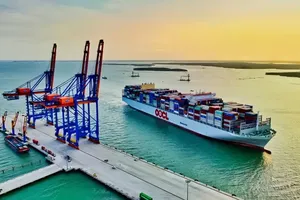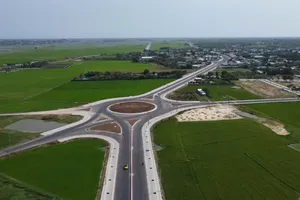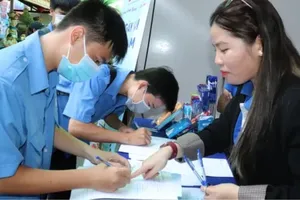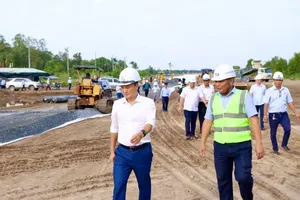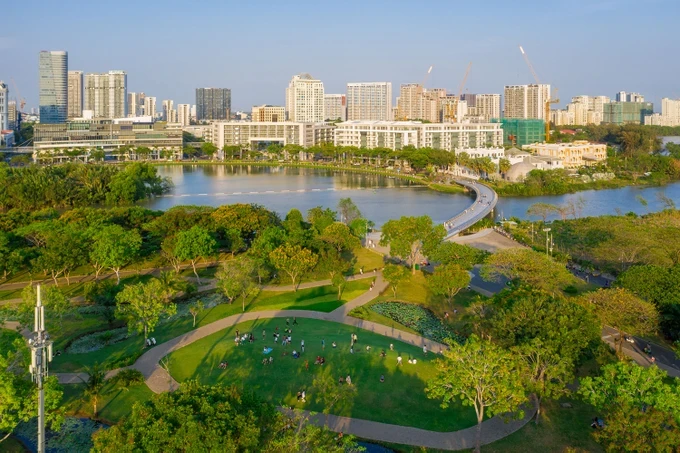
From genesis of Tan Thuan Export Processing Zone…
Today, the resplendent Phu My Hung urban area stands as an exemplary model city, an undeniable symbol of prosperity. Adjacent to it thrives the vibrant Tan Thuan Export Processing Zone, contributing billions of US dollars to the nation’s export revenue each year. The vast Nguyen Van Linh Avenue, with ten lanes for a total width of 120m, seamlessly connects vital seaports, export processing zones, and burgeoning urban centers.
This entire landscape serves as a powerful testament to the dynamic development that has swept through the city’s southern reaches. Yet, a mere three decades prior, this entire area, collectively known as Nha Be, was a sprawling, unproductive swampland.
Economic expert Phan Chanh Duong vividly remembered his 1980s visit to Nha Be, a desolate area characterized by scattered, rudimentary houses amidst vast rice paddies, with deeper hamlets lacking electricity and clean water. Despite the neglected, saline, and infertile terrain, he astutely recognized its strategic proximity to Tan Thuan Port, envisioning an export processing zone that would generate crucial employment for impoverished laborers from nearby districts.
This very economic expert was the driving force behind the conceptualization of South Saigon’s transformation, a vision he articulated in 1989 after the introduction of the first Law on Foreign Investment Attraction in 1988, which prompted HCMC’s leadership to task its various companies and departments with formulating proposals to attract international capital into the city.
The establishment of conventional industrial parks was deemed risky, potentially bankrupting subsidized state-owned enterprises due to their lower productivity compared to foreign competitors. In contrast, the export processing zone concept offered a strategic advantage by attracting foreign investors who would lease land and labor, with their export-only production posing no threat to the emerging domestic market. This innovative proposal secured approval for a pilot implementation by the Council of Ministers.
Several locations like Tan Cang and Cat Lai were considered, but Phan Chanh Duong advocated for Nha Be. A fortunate connection with Taiwan’s CT&D Co. led to a partnership for the ambitious Tan Thuan Export Processing Zone. Overcoming the significant challenge of Nha Be’s weak soil, Duong ingeniously proposed using dredged sand from the Soai Rap River for cost-effective land filling and stabilization, a far cheaper alternative to sourcing red soil from Bien Hoa.
Despite initial setbacks, skepticism, and various obstacles, Tan Thuan Export Processing Zone eventually materialized. Established in 1991, it now hosts over 250 investors hailing from 22 countries and territories, providing employment for more than 70,000 workers and generating over US$2 billion in annual exports. From this pioneering export processing zone, the model has since proliferated, giving rise to nearly 400 such zones and industrial parks across the nation.
The journey of developing South Saigon, building upon the foundations laid by visionary pioneers, continues unabated. Leveraging the groundwork established by their predecessors, South Saigon today is unlocking a wealth of new opportunities, including smart city initiatives, high-tech parks, and state-of-the-art commercial and financial hubs.
…to emblematic Phu My Hung Urban Area
In revisiting historical records pertaining to Phu My Hung, the figure of Lawrence S. Ting – a Taiwanese entrepreneur inextricably linked to the development of South Saigon, and widely known in Vietnam as Dinh Thien Ly – prominently emerges. It was Mr. Lawrence S. Ting who proactively and persistently championed the Phu My Hung Urban Area project.
Construction commenced in 1996 and by 2007, Nguyen Van Linh Avenue, developed by Phu My Hung Joint Venture Company, was completed, providing a vital artery connecting South Saigon with major developments such as Tan Thuan Export Processing Zone, Hiep Phuoc Industrial Park, and Phu My Hung Urban Area itself. This thoroughfare also serves as a crucial transportation link from the city’s southern districts to the southwestern provinces, and is widely regarded as one of the widest and most aesthetically pleasing roads in the entire country.
Phu My Hung Urban Area achieved national recognition in 2008 as the country’s first model urban area, a testament to its comprehensive planning, well-integrated technical and social infrastructure, and its provision of a modern, sustainable, and amenity-rich living environment.
Remarkable transformation of Nhieu Loc - Thi Nghe Canal
Reflecting on the history of the Nhieu Loc - Thi Nghe Canal, 72-year-old Nguyen Van Thanh, a resident of Hoang Sa Street in District 3, could not help but shudder. “Back then, the canal was unbelievably filthy. The water was black, and a pungent stench permeated the air, day and night. Rats and mosquitoes were rampant, and anyone living near the canal inevitably suffered from respiratory ailments and skin infections. Every time it rained, the water would rise, and garbage would flow directly into our homes.”
In the mid-2000s, HCMC embarked on an ambitious large-scale canal rehabilitation project. Slum dwellings were systematically cleared, the canal bed was extensively dredged, wastewater underwent treatment, and a modern drainage infrastructure was constructed.
Initially, widespread skepticism prevailed, with many doubting the possibility of reviving such a long-standingly polluted waterway. However, after more than a decade of dedicated rehabilitation efforts, a veritable miracle unfolded: the Nhieu Loc - Thi Nghe Canal gradually regained its clarity, and its banks transformed into airy boulevards shaded by lush greenery.
Beyond the significant improvement in the living environment, the canal's resurgence also generated economic opportunities for local residents. Cafes, restaurants, and boat tour services flourished, attracting both domestic and international tourists.
Director Luong Minh Phuc of the HCMC Traffic Works Construction Investment Project Management Board (who, at the time, was the Director of the East-West Boulevard and Water Environment Project Management Board – the primary investor in the Nhieu Loc - Thi Nghe canal rehabilitation project), stated that the project was initiated in 2002 with an investment exceeding VND8.6 trillion ($334.5 million). This was one of the largest urban environmental remediation projects in Vietnam at that time.
The city’s extensive canal renovation involved relocating thousands of households, building 9km+ drainage, and installing pumping stations. Years of dredging removed millions of cubic meters of sludge. The result is improved flow, new scenic roads, thousands of trees planted, and revitalized sidewalks and parks, completely transforming the area’s appearance.
From a “dead canal”, Nhieu Loc - Thi Nghe has now become one of the city’s vital “green lungs”, a source of immense pride for the people of HCMC and a testament to a truly spectacular environmental rehabilitation miracle.
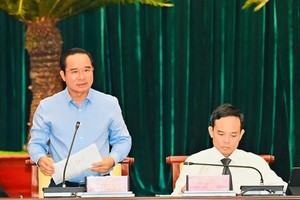

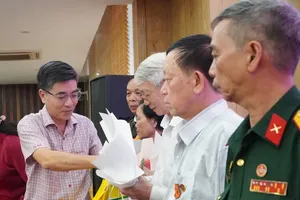

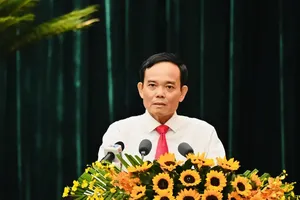
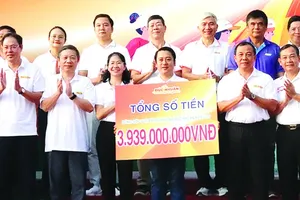
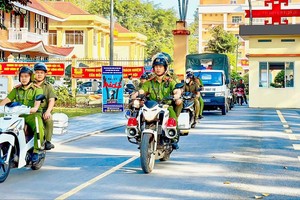
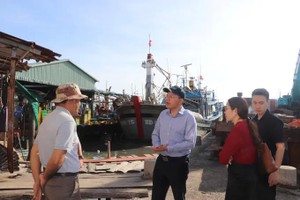
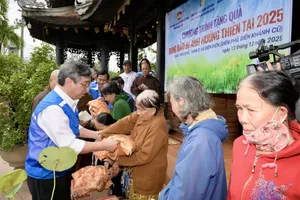
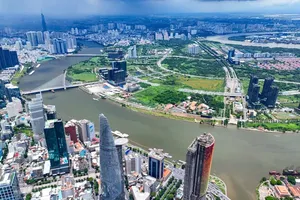
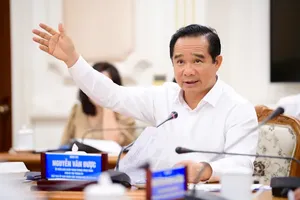
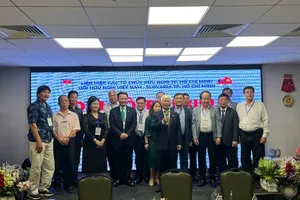
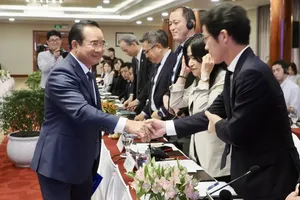
)
